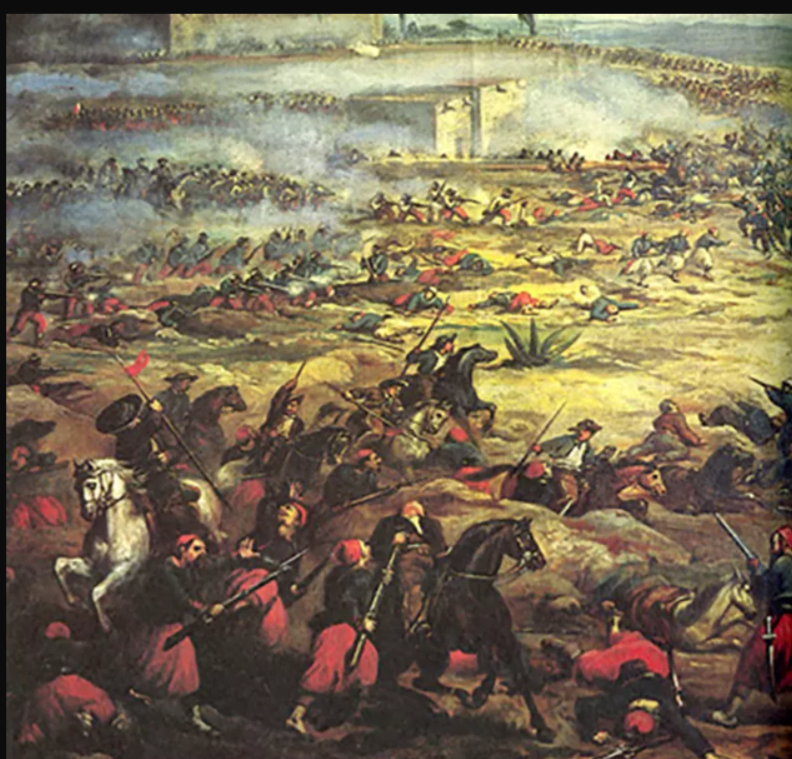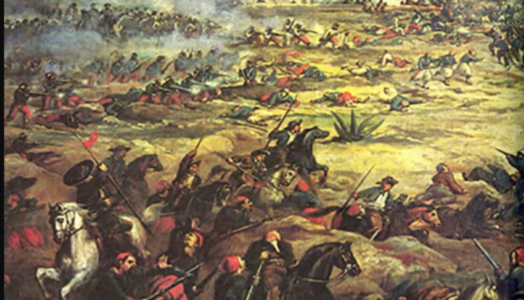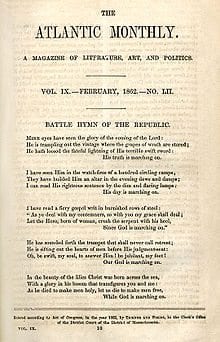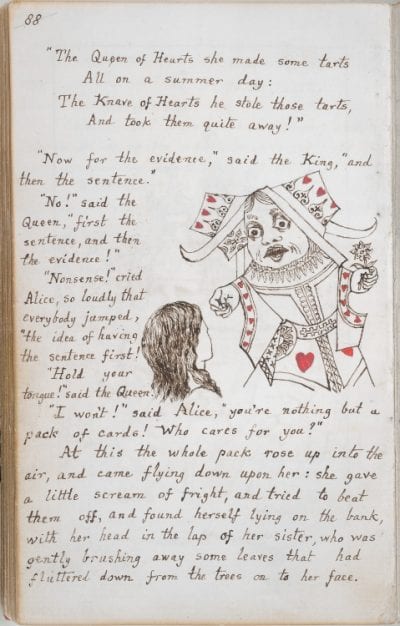The Battle of Puebla was fought May 5, 1862 and occurred during the French intervention in Mexico. Landing a small army in Mexico in early 1862 under the pretense of forcing the repayment of Mexican debts, France soon moved to conquer the country. As the United States was occupied with its own Civil War and could not intervene, the government of Napoleon III saw an opportunity to install a friendly regime while gaining access to Mexico’s natural resources.
In the summer of 1861, President Benito Juárez announced that Mexico would suspend repayment of loans to Britain, France, and Spain for two years as he worked to stabilize his nation’s finances. These loans had primarily been taken to finance operations during the Mexican-American War and the Reform War. Unwilling to accept this suspension, the three European nations concluded the Convention of London in late 1861 and formed an alliance to deal with the Mexicans.
French Intentions
On February 19, 1862, Mexican Foreign Minister Manuel Doblado met with British and Spanish representatives near La Soledad. Here the two European nations agreed not to advance further while debt negotiations were in progress. As talks progressed, the French captured the port of Campeche on February 27. A few days later, on March 5, a a French army under the command of Major General Charles Ferdinand Latrille, Comte de Lorencez was landed and began operations.
Lorencez Advances
Pressing inland to avoid the diseases of the coast, Lorencez occupied Orizaba which prevented the Mexicans from taking possession of key mountain passes near the port of Veracruz. Falling back, the General Ignacio Zaragoza’s Army of the East took up positions near Acultzingo Pass. On April 28, his men were defeated by Lorencez during a large skirmish and he retreated toward Puebla. On the road to Mexico City, Juárez had ordered fortifications constructed around the city in anticipation of a French offensive.
Reporting his victory at Acultzingo, Lorencez stated, “We are so superior to the Mexicans in organization, race…and refinement of manners, that I am pleased to announce to His Imperial Majesty, Napoleon III, that from this moment on, as the leader of my 6,000 brave soldiers, I can consider myself the owner of Mexico.”
Battle of Puebla
- Conflict: French Intervention in Mexico (1861-1867)
- Dates: May 5, 1862
- Armies & Commanders:
- Mexicans: General Ignacio Zaragoza
- approx. 4,500 men
- French: Major General Charles de Lorencez
- 6,040 men
- Mexicans: General Ignacio Zaragoza
- Casualties:
- Mexico: 87 killed, 131 wounded, 12 missing
- France: 172 killed, 304 wounded, 35 captured

The Armies Meet
Pushing on, Lorencez, whose troops were among the best in the world, believed he could easily dislodge Zaragoza from the town. This was reinforced by intelligence suggesting that the population was pro-French and would aid in expelling Zaragoza’s men. Reaching Puebla late on May 3, Zaragoza set his men to improving the city’s defenses before placing his forces in an entrenched line between two hills. This line was anchored by two hilltop forts, Loreto and Guadalupe. Arriving on May 5, Lorencez decided, against the advice of his subordinates, to storm the Mexican lines. Opening fire with his artillery, he ordered the first attack forward.
The French Beaten
Meeting heavy fire from Zaragoza’s lines and the two forts, this attack was beaten back. Somewhat surprised, Lorencez drew upon his reserves for a second attack and ordered a diversionary strike towards the east side of the city. Supported by artillery fire, the second assault advanced further than the first but was still defeated. One French soldier managed to plant the Tricolor on the wall of Fort Guadalupe but was immediately killed. The diversionary attack fared better and was only repulsed after brutal hand-to-hand fighting.

Having expended the ammunition for his artillery, Lorencez ordered an unsupported third attempt on the heights. Surging forward, the French closed to the Mexican lines but were unable to breakthrough. As they fell back down the hills, Zaragoza ordered his cavalry to attack on both flanks. These strikes were supported by infantry moving into flanking positions. Stunned, Lorencez and his men fell back and assumed a defensive position to await the anticipated Mexican attack. Around 3:00 PM it began to rain and the Mexican attack never materialized. Defeated, Lorencez retreated back to Orizaba.
Aftermath
A stunning victory for the Mexicans, against one of the best armies in the world, the Battle of Puebla cost Zaragoza 83 killed, 131 wounded, and 12 missing. For Lorencez, the failed assaults cost 462 dead, over 300 wounded, and 8 captured. Reporting his victory to Juárez , the 33-year old Zaragoza stated, “The national arms have been covered with glory.” In France, the defeat was seen as a blown to the nation’s prestige and more troops were immediately sent to Mexico. Reinforced, the French were able to conquer most of the country and install Maximilian of Habsburg as emperor.
Despite their eventual defeat, the Mexican victory at Puebla inspired a national day of celebration best known as Cinco de Mayo. In 1867, after French troops left the country, the Mexicans were able to defeat the forces of Emperor Maximilian and fully restore power to the Juárez administration.
Source: https://www.thoughtco.com/french-in-mexico-battle-of-puebla-2360834



